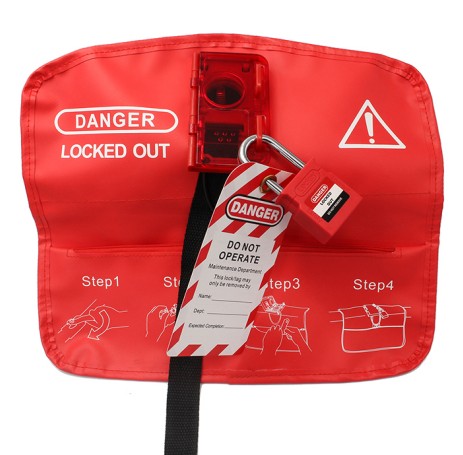OSHA 29 CFR 1910.147 outlines
"alternative protective measures" procedures that can improve
efficiency without compromising operational safety. This exception is
also referred to as a "minor service exception". Designed for machine
tasks that require frequent and repeated visits (for example, clearing
blockages on conveyor belts or small tool changes). Alternative measures
do not require complete power cuts.
Examples of alternative method technologies include key-controlled
locks, control switches, interlocking guards, and remote equipment and
disconnection. This may also mean locking only part of the device
instead of the entire machine.
The latest ANSI standard "ANSI/ASSE Z244.1 (2016) Control of
Hazardous Energy-Locking, Tagging, and Alternative Methods" has agreed
with OSHA that workers should be protected from accidental equipment
activation or potential leakage of hazardous energy. However, the ANSI
committee did not attempt to fully comply with every historic OSHA
compliance requirement. Instead, the new standard provides extended
guidance beyond OSHA’s regulatory constraints on “routine, repetitive,
and production operations indispensable” tasks.

ANSI makes it clear that LOTO should be used unless the user can
prove that a complete alternative method will provide effective
protection. In situations where the task is not well understood or risk
assessed, lockout should be the default protective measure applied to
control the machine or process.
Section 8.2.1 of ANSI/ASSE Z244.1 (2016) stipulates that it should
be used only after it has been assessed and recorded that the
technology used will cause negligible harm through the application of
practical (or demonstration) studies alternative method. There is a risk
of sudden start or no risk.
Following the control hierarchy model, ANSI/ASSE Z244.1 (2016)
provides detailed guidance on whether, when, and how to apply a series
of alternative control methods to provide equal or better protection for
personnel performing specific tasks. In addition, it also details
alternative risk reduction methods for some new technologies, including
packaging, pharmaceuticals, plastics, printing and steel industries;
semiconductor and robotics applications; and others who are challenged
by current regulatory restrictions.
At this point, it should be emphasized that LOTO provides the
highest level of protection, and where possible, it should be used to
protect employees from hazardous energy sources. In other words, the
inconvenience alone is not an acceptable excuse to use alternative
measures.
In addition, CFR 1910.147 clearly states that permitted
alternative measures must provide the same or higher level of protection
as LOTO. Otherwise, it is considered non-compliant and therefore not
sufficient to replace LOTO.
By using standard safety-level equipment—such as interlocking
doors and emergency stop buttons—plant managers can achieve safe and
reliable machine access, replacing standard LOTO procedures without
violating OSHA requirements. Implementing alternative procedures to
ensure equal protection for specific tasks can increase productivity
without endangering employees. However, these procedures and their
benefits are subject to conditions and require a thorough understanding
of the latest OSHA and ANSI standards.
Editor's note: This article represents the independent views of
the author and should not be interpreted as endorsement by the National
Security Council.
Safety + Health welcomes comments that promote respectful
dialogue. Please keep the subject. Reviews that contain personal
attacks, profanity, or abusive language-or those that actively promote
products or services-will be deleted. We reserve the right to determine
which comments violate our comment policy. (Anonymous comments are
welcome; just skip the "name" field in the comment box. An email address
is required but will not be included in your comment.)
Take the quiz about this issue of the magazine and get recertification points from the Certified Safety Expert Committee.
The "Safety + Health" magazine published by the National Safety
Council provides 86,000 subscribers with nationwide occupational safety
news and industry trend analysis.
Save lives, from the workplace to anywhere. The National Security Council is a leading non-profit security advocate in the United States. We focus on eliminating the main causes of preventable injuries and deaths.